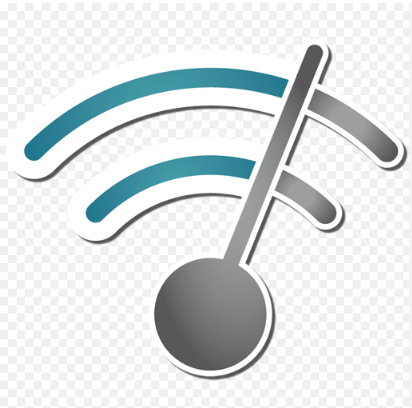
How long can fiber optic cables be installed without requiring signal boosting or regeneration?
Types of Fiber: Single-Mode vs. Multi-Mode
Single-Mode Fiber (SMF): This type of fiber is designed for long-distance communication, using a small core (about 8-10 microns in diameter) to carry light signals over vast distances. Single-mode fibers can transmit data up to 100 kilometers (62 miles) or more before signal boosting (also known as regeneration or amplification) is needed. Single-mode fibers are typically used in telecommunications networks, long-distance internet backbones, and data centers where long-haul communication is required.
Multi-Mode Fiber (MMF): Multi-mode fibers have a larger core (usually 50-62.5 microns) and are better suited for shorter distances. Multi-mode fibers can transmit signals over distances ranging from a few hundred meters to 2 kilometers (1.24 miles), depending on the transmission rate and the type of multi-mode fiber used (OM1, OM2, OM3, OM4, or OM5). They are more commonly used in local area networks (LANs), data centers, and campus networks, where shorter-distance communication is needed.
Factors Affecting Transmission Distance
Several factors impact how far fiber optic cables can transmit data without requiring signal regeneration:
Attenuation (Signal Loss): Attenuation refers to the gradual reduction of signal strength as it travels through the fiber optic cable. For fiber optics, attenuation is mainly caused by impurities in the glass core, microscopic bends in the fiber, or scattering of the light signal. Single-mode fiber has lower attenuation, allowing for longer transmission distances. Multi-mode fiber, due to its larger core, experiences higher attenuation and requires signal regeneration over shorter distances.
Wavelength of Light Signal: The wavelength of the light used in fiber optic transmission also affects the distance the signal can travel. Common wavelengths used in fiber optics are 850 nm, 1310 nm, and 1550 nm. Longer wavelengths, such as 1550 nm, experience less attenuation and can transmit data over longer distances compared to shorter wavelengths like 850 nm.
Data Rate (Bandwidth): The transmission distance also depends on the data rate or bandwidth of the fiber optic system. Higher data rates require more bandwidth, which can limit the maximum transmission distance. For instance, a 1 Gbps system on multi-mode fiber can typically transmit up to 550 meters, while a 10 Gbps system may only reach 300 meters.
Type of Fiber and Quality: Fiber optic cables come in different grades, such as OM1, OM2, OM3, OM4, and OM5 for multi-mode fibers. Each type supports different transmission distances based on data rate and wavelength. OM4, for example, is optimized for longer-distance, high-speed transmission compared to OM1.
Splicing and Connector Losses: Every splice or connector in a fiber optic system introduces signal loss. Proper installation and splicing techniques can minimize this loss, but poor handling or improper connectors can significantly reduce the transmission distance.
Signal Boosting, Amplification, and Regeneration
When fiber optic cables exceed their maximum transmission distance, signal boosting or regeneration is necessary. There are a few ways to achieve this:
Optical Amplifiers: These devices boost the strength of the light signal without converting it to an electrical signal. Optical amplifiers, such as Erbium-Doped Fiber Amplifiers (EDFAs), are commonly used in long-distance, high-capacity networks (such as submarine cables) to extend transmission distances.
Signal Regeneration: In some systems, the optical signal is converted into an electrical signal, cleaned up, and then converted back into an optical signal before continuing on its path. This process is more complex than amplification but is sometimes necessary for very long distances or when the signal has degraded significantly.
Repeaters: Repeaters are a form of signal regeneration where the data is received, re-transmitted, and then sent back down the fiber cable. They are commonly used in very long-distance networks, including transcontinental fiber optic networks.
Practical Applications of Fiber Optic Distances
The actual distance a fiber optic cable can transmit signals without boosting or regeneration depends on its application. Here are a few examples of typical distances based on different use cases:
Telecommunications Networks: Single-mode fiber optic cables are the backbone of global telecommunications. In these networks, signals can typically travel up to 80-100 kilometers (50-62 miles) without amplification. In submarine cables, distances may reach up to 400 kilometers (250 miles) between amplifiers, thanks to advanced signal processing and optical amplification technologies.
Data Centers and Local Area Networks (LANs): Multi-mode fiber is often used in these environments. For instance, a 10 Gbps Ethernet connection using OM3 multi-mode fiber can typically transmit signals up to 300 meters (984 feet), while 40 Gbps or 100 Gbps Ethernet connections using OM4 multi-mode fiber can reach up to 150 meters (492 feet).
Campus Networks: In universities or large corporate campuses, single-mode fiber is often used for long-distance communication between buildings. These networks can extend several kilometers before requiring signal regeneration, with typical distances ranging from 10-40 kilometers (6-25 miles).
Submarine Cables: The longest fiber optic cables are found in undersea communication networks, where signal regeneration is necessary every few hundred kilometers. These cables can span thousands of kilometers and are critical for global internet connectivity.
Advancements in Fiber Optic Technology
Recent advancements in fiber optic technology have further extended the distances that fiber can transmit data without signal boosting. These include:
Wavelength-Division Multiplexing (WDM): WDM technology allows multiple light signals, each at different wavelengths, to be transmitted simultaneously over the same fiber. This increases the data-carrying capacity of the fiber and allows for longer transmission distances by optimizing the use of available bandwidth.
Low-Loss Fiber: Improvements in the manufacturing of fiber optic cables have reduced attenuation, allowing signals to travel farther without regeneration. Low-loss fibers are particularly useful in long-haul networks where extending the distance between signal regeneration points can significantly reduce costs.
Advanced Modulation Techniques: New modulation methods, such as coherent detection, enable more efficient use of the fiber's bandwidth, allowing for longer transmission distances and higher data rates. These techniques are increasingly used in high-capacity, long-distance fiber optic networks.
Higher-Powered Lasers: The use of higher-powered laser sources can extend the distance that signals travel without degradation. This is particularly important in networks where signal regeneration or amplification is not feasible due to cost or logistical constraints.
4567
0
747
172

